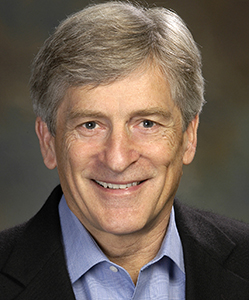11 avril 2019: Prof. James Paulson
«Understanding the mechanisms underlying discrimination between self and non-self is a central research goal in immunology. Evidence on the key role played by sialic acid binding Immunoglobulin type Lectins (Siglecs) in self/non-self discrimination is accumulating. Jim Paulson is a world leading expert in glycobiology, particularly with respect to viral envelope glycoproteins and vaccine design. He has now begun to use this expertise in a multidisciplinary project combining immunology and biotechnology to design an elegant siglec-targeting nanoparticle system that effectively suppresses immune responses in B cells and mast cells. He will discuss groundbreaking work in which this approach is used in a novel therapeutic strategy to combat allergy.»
Prof. Oliver HARTLEY, Dpt de pathologie et immunologie, Faculté de médecine UNIGE
Dre Frédérique LISACEK, Dpt d’informatique, Section de biologie, Faculté des sciences UNIGE
Hosts
____________________________________
Prof. James C. PAULSON
Cecil H. and Ida Greene Professor and Chair
Departments of Molecular Medicine, Immunology and Microbiology
The Scripps Research Institute, La Jolla, USA

«Exploiting inhibitory Siglecs to modulate immune responses»
The sialic acid-binding immunoglobulin-type lectin family of cell adhesion receptors called Siglecs comprise 14 members in humans and 9 members in mice that are predominately expressed on white blood cells of the immune system. Many siglecs carry regulatory motifs that act as checkpoint inhibitors that regulate immune responses, and help the immune system distinguish between self and non-self. We have developed a liposomal nanoparticle platform that exploits the inhibitory functions of siglecs for suppression of antigen induced immune cell activation. Key to this platform are synthetic ligands that bind with high avidity and high specificity for a single Siglec. The tolerogenic nanoparticles display an antigen and a ligand of an inhibitory Siglec expressed on the cells that recognize the antigen. When an immune cell receptor recognizes the antigen, the Siglecs are recruited to the immunological synapse, suppressing the immune response and effectively inducing tolerance to the antigen. These siglec ligand-decorated antigenic nanoparticles show potential for suppression of antigen-mediated immune responses of B cells and mast cells. (NIH grants AI050143, AI099141, HL107151).
Biography
James C. Paulson obtained his PhD (Biochemistry) in 1974 from the University of Illinois at Champaign-Urbana, and did post-doctoral work at Duke University Medical Centre, in Durham, North Carolina from 1974-78. From 1978-1990 he rose from Assistant Professor to full Professor and vice-chair in the Department of Biological Chemistry at the UCLA School of Medicine where he developed an interest in analysis of receptor specificity of influenza viruses from different host species. From 1990-1999 he served as Vice President and Member Board of Directors of Cytel Corporation, La Jolla, CA. From 1999-present he has been Professor in the Departments of Cell and Molecular Biology, Chemical Physiology, and Immunology and Microbial Sciences at The Scripps Research Institute, in La Jolla, California. He served as acting President & CEO from 2014-2015 and is currently Cecil and Ida Green Professor and Chair of Molecular Medicine. His current research interests include the roles of glycan binding proteins in the modulation of immune cell signaling, and the receptor specificity of mammalian and animal influenza viruses.
For listing of publications: https://www.scripps.edu/paulson/publications.html
